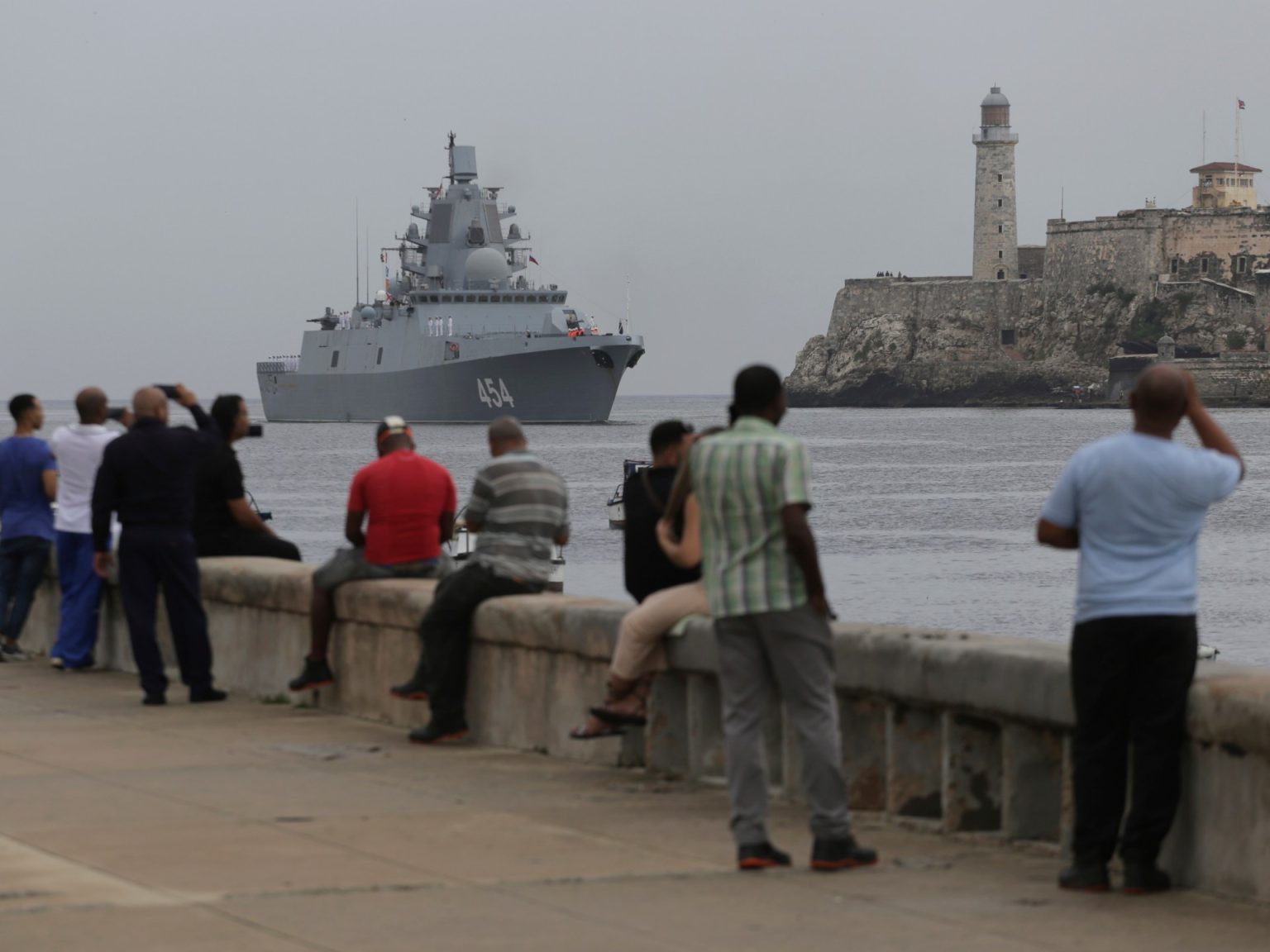Amid rising tensions over Russia’s invasion of Ukraine, Moscow has deployed its Admiral Gorshkov frigate and the nuclear-powered submarine Kazan to Cuba for a five-day visit, accompanied by a tug boat and a fuel ship. The arrival of these vessels in Havana was met with curiosity and excitement from onlookers, fishermen, and police along the Malecon seafront boulevard. Cuba, a longtime ally of Russia, welcomed the fleet with a 21-gun salute while Russian diplomats celebrated their arrival with small flags and selfies. The Russian Ministry of Defence reported that the vessels conducted training with high-precision missile weapons in the Atlantic Ocean on their way to Cuba, equipped with advanced missile systems including Zircon hypersonic missiles, Kalibr cruise missiles, and Onyx antiship missiles.
The deployment of the Russian navy so close to the United States is seen as a strategic move by Moscow in response to Western involvement in Russia’s war in Ukraine. This development comes at a time when the US and its allies have allowed Ukraine to use their weapons on targets inside Russia amid ongoing conflict in northeastern Kharkiv. The proximity of Havana to Key West in Florida, home to a US naval air station, adds to the significance of this deployment. Benjamin Gedan, director of the Latin America programme at the Wilson Center, views the arrival of the Russian warships as a signal to Washington that Moscow is an influential player in the region, especially in countries like Cuba and Venezuela.
Cuba has emphasized that such port visits by naval vessels from friendly countries are not unusual and that the Russian fleet is not carrying nuclear weapons. The US has adopted a measured response to the deployment, with White House National Security Adviser Jake Sullivan categorizing such naval exercises as routine. While Sullivan acknowledged the presence of the Russian ships, he downplayed any specific motives behind the deployment. The visit coincided with a meeting in Moscow between Cuban Foreign Minister Bruno Rodriguez and Russian Foreign Minister Sergey Lavrov, during which Rodriguez expressed Cuba’s rejection of NATO expansion towards Russia’s borders and called for a diplomatic resolution to the conflict in Europe.
Despite historical ties between Cuba and Russia during the Cold War era, the current relationship between the two countries is driven primarily by economic factors. Cuba’s reliance on Russian support has increased due to economic challenges, including shortages of essential resources like food, medicine, and fuel exacerbated by the US economic embargo imposed since 1960. Russia has stepped in to provide assistance to Cuba, including a recent delivery of oil and promises to collaborate on various projects such as sugar production, infrastructure development, renewable energy, and tourism. It is expected that the Russian vessels will remain in Havana until mid-June, with potential stops in Venezuela later in the summer.
As Russia strengthens its ties with countries like Cuba in the face of escalating tensions with the US and its allies, the geopolitical implications of the Russian naval deployment to Cuba are being closely monitored. The history of Cuban-Russian relations, the economic imperatives that drive their current partnership, and the strategic implications for US interests in the region all contribute to the significance of this development. With uncertainty surrounding the future trajectory of the conflict in Ukraine and broader implications for global security, the presence of Russian warships in close proximity to the United States serves as a reminder of the complex geopolitical dynamics at play in the region.













